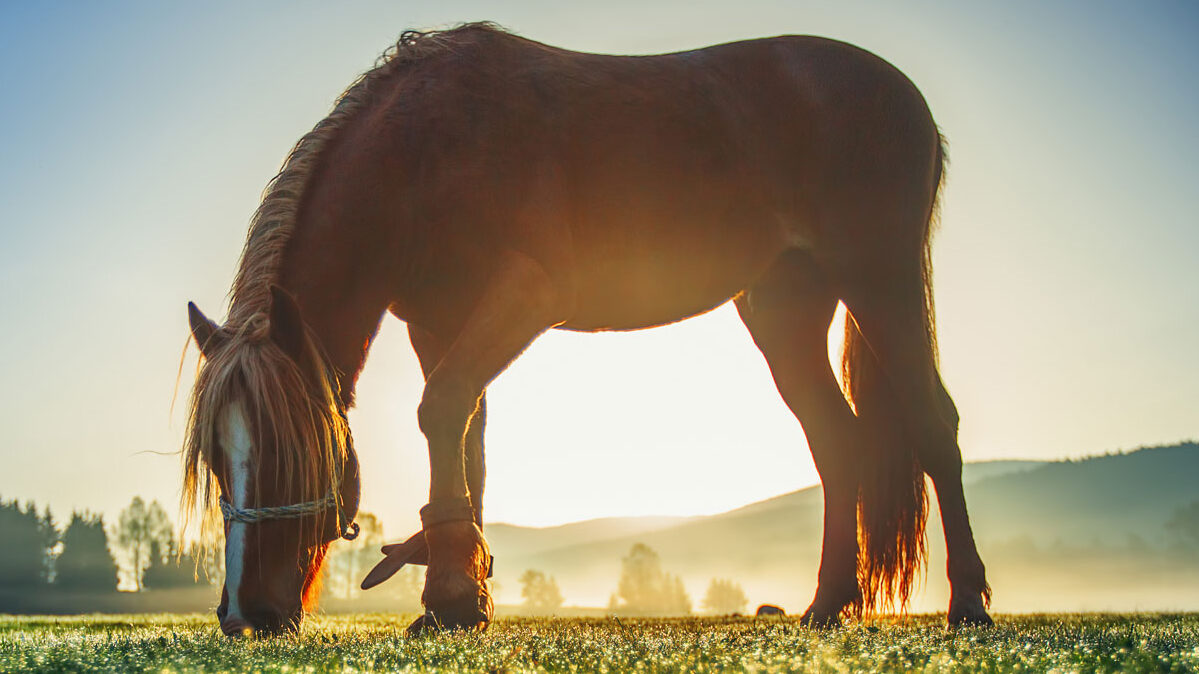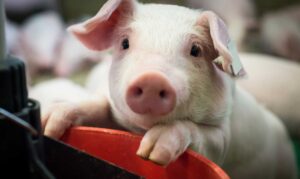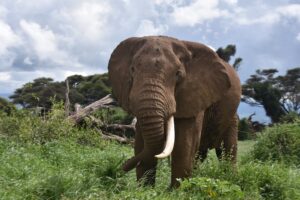NC State Veterinary Medicine Research Roundup, June 2021

A look at some of the latest published studies from the CVM.
Restraining Feral Horses
The first evaluation of Butorphanol-azaperone-medetomidine, or BAM, in horses, has shown that using the intramuscular drug with IV ketamine provides chemical restraint suitable for field castration of feral horses.
There were no deaths, though low blood oxygen levels were observed in most of the horses. The Equine Veterinary Journal published the research with co-authors including Julie Balko, Lysa Posner, Jonathan Fogle and Callie Fogle.
Read the study here.
Comparing Head Trauma Imaging Methods
Magnetic resonance imaging (MRI) evaluations of dog and cat patients with acute head trauma mostly confirm findings from computed tomography (CT), the imaging method of choice, according to a new study.
Seven different types of MRI sequences and four different MRI readers were used to assess the presence or absence of acute skull fractures with CT data. The agreement with CT for individual readers ranged from 92.6% to 94.7%, and the agreement for the different MRI sequences with CT ranged from 92.6% to 94.4%.
Researchers recommend adding a PD-W MRI sequence to the MR protocol when evaluating small animal head trauma. Nathan Nelson is a co-author of the study published in Frontiers in Veterinary Science.
Read the study here.
Pet Loss and Owner Grief 
A review study authored by Rachel Park, Kenneth Royal and Margaret Gruen offers a comprehensive examination of the relationship between pet loss and owner grief response.
Researchers evaluated 48 previous studies that explored factors influencing grief response, the disenfranchised nature surrounding pet loss and the types of coping mechanisms used, including social support, memorialization and relationships with other animals.
Suggestions for future research include focusing on the effectiveness of coping mechanisms used by bereaved pet owners.
The Journal of Applied Animal Welfare Science published the research.
Read the study here.
A Novel Veterinary Disease
A new study is the first in peer-reviewed literature to describe the disease bullous amyloidosis in a veterinary species.
Bullous amyloidosis, a rare disease in humans, is characterized by hemorrhagic vesicles and bullae on the skin and mucosa. The disease was identified in a 17-year-old thoroughbred mare that came to a veterinary hospital with weight loss and severe oral cavity ulcers.
Researchers have identified the condition as a differential for bullous disease in horses. Clinical clues include hemorrhagic nature of the bullae, scarring and deep secondary ulcers.
Study co-authors include Keith Linder, Betta Breuhaus, Petra Bizikova and Devin Fussell. Veterinary Dermatology published the research.
Read the study here.
Hastening Ischemia Recovery 
The peptide larazotide acetate (LA) stimulates repair of ischemic-injured epithelium in pigs through modulation of tight junctions, according to a new study.
Intestinal ischemia, or lack of an adequate blood supply, leads to mucosal injury, including paracellular barrier loss due to disruption of tight junctions. Study authors include Anthony Blikslager, Kristen Messenger, Alexandra Carlson, Tiffany Pridgen, Liliana Hernandez and Zachary Slifer. PLOS One published the research.
Read the study here.
Protecting Nazca Boobies
The first health assessment of a Nazca boobies breeding colony at Daphne Major in the Galápagos provides vital information to monitor the health of the vulnerable species.
The Nazca boobies were given physical examinations and blood samples were collected for hematology and biochemistry and researchers offer vital information on the best ways to collect blood samples and other physical properties of the species.
Sea birds like Nazca boobies are useful to monitor because of their colony breeding and wide migration range. Health assessments of wild populations in the Galápagos helps wildlife managers and veterinarians to effectively detect changes or deteriorations in health status.
Authors of the study, published in the Journal of Zoo and Wildlife Medicine, include Greg Lewbart, Diane Deresienski, Ronald Passingham and Emily Tucker-Rutter.
Read the study here.
Bartonella Exposure in U.S. Cats
A new study evaluates the exposure of domestic cats to three different types of zoonotic Bartonella species in the United States.
Using an indirect immunofluorescent assay, researchers evaluated 1,362 serum samples from domestic cats across America looking at three species and two strain types of Bartonella associated with felines: B. henselae type 1, B. henselae type 2, B. koehlerae and B. clarridgeiae.
The highest levels of seroreactivity occurred in the East South-Central, South Atlantic, West North-Central and West South-Central regions. The lowest seroreactivity was detected in the East North-Central, Middle Atlantic, Mountain, New England, and Pacific regions. Reactivity against all four Bartonella species antigens was observed in samples from eight of the nine United States geographic regions.
Cat-associated Bartonella species can cause mild to severe illness in humans. Ed Breitschwerdt is one of the authors of the study, published in Pathogens.
Read the study here.
Elephant Disease Defenses 
New research finds that gene regulation plays an important role in the inflammatory responses of Asian and African elephants, leading to increased infectious disease and cancer susceptibility in Asian elephants.
Researchers including Tara Harrison analyzed pathology data from 26 zoos and found that Asian elephants have increased neoplasia and malignancy prevalence compared to African bush elephants. The information is consistent with the species’ observed higher susceptibility to tuberculosis and elephant endotheliotropic herpesvirus.
Researchers sequenced multiple elephant genomes to investigate genetic mechanisms underlying disease resistance. In both elephant species genomes, conserved elements were significantly enriched with genes differentially expressed by the species.
The genomic discoveries will inform future studies to identify effective treatment approaches for ill elephants, which has the potential to improve conservation efforts.
Molecular Biology and Evolution published the research.
Read the study here.
Marek’s Disease and Chickens
The findings of a new study suggest that Marek’s disease virus elicits different immune responses in the brain and the eye of infected chickens.
Researchers evaluated cytokine transcripts chronologically in the brain and the eye of chickens infected with the very virulent plus Marek’s disease virus (vv + MDV) strain 648A. Marked differences were found in the transcripts in the brain and eye.
The highly contagious Marek’s disease is a viral disease of poultry that leads to nerve enlargement and T-cell lymphomas. Since immune responses in the eye of chickens have been poorly studied, further studies on MDV pathogenesis in the eye may greatly contribute to knowledge of chicken eye immunity.
Study authors include Isabel Gimeno, Arun Pandiri, Aneg Cortes and Coral Salvador. Veterinary Immunology and Immunopathology published the research.
Read the study here.


